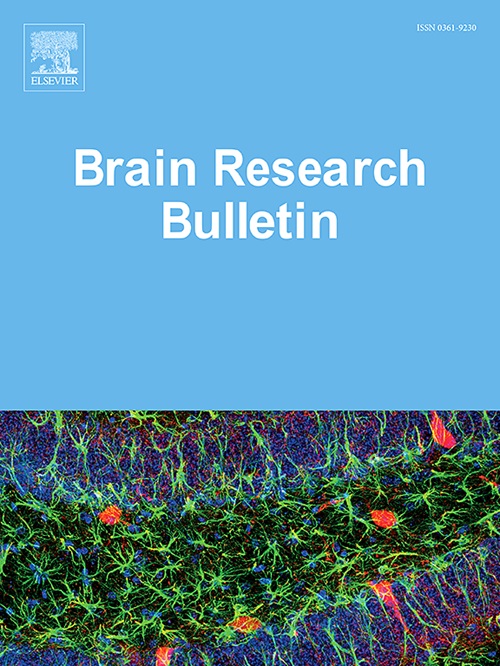α-酮戊二酸促进焦虑、激活自噬并抑制食堂饮食雌性小鼠大脑皮层中的抗氧化酶
IF 3.5
3区 医学
Q2 NEUROSCIENCES
引用次数: 0
摘要
本文章由计算机程序翻译,如有差异,请以英文原文为准。
Alpha-ketoglutarate promotes anxiety, activates autophagy, and suppresses antioxidant enzymes in the cerebral cortex of female mice on cafeteria diet
Alpha-ketoglutarate (AKG), an intermediate of the tricarboxylic acid cycle, has been found to mitigate oxidative stress and inflammation. In turn, a cafeteria diet (CD), an obesogenic diet, is often associated with oxidative stress and inflammation. This study aimed to determine whether AKG can level the effects of CD on animal behavior, oxidative stress markers, glycolytic flow, and autophagy in the mouse cerebral cortex. Female C57BL/6 J mice were divided into two groups and fed either a standard diet or a CD for eight weeks. For the next four weeks, each group continued to be fed the previous diet; however, half of the individuals within each group received drinking water with 1 % AKG. Using an open field test, we found that the combination of CD and AKG promoted the development of anxiety signs. Both CD and AKG decreased the exploratory behavior of mice, with a significant additive effect in the combined diet. On diets supplemented with AKG, animals produced fewer fecal boli, a measure of emotionality. On all experimental diets, mice had lower activities of antioxidant and related enzymes, with no significant differences in the activities of glycolytic enzymes. The AKG-supplemented diet induced the transcription of autophagy-related genes and targets of the forkhead box O factor, involved in the regulation of carbohydrate metabolism. Transcriptional changes induced by AKG were partly abrogated by the CD. These findings suggest that AKG, particularly when combined with CD, may modulate behavioral responses and oxidative stress intensity in the brain by altering key metabolic and autophagic pathways.
求助全文
通过发布文献求助,成功后即可免费获取论文全文。
去求助
来源期刊

Brain Research Bulletin
医学-神经科学
CiteScore
6.90
自引率
2.60%
发文量
253
审稿时长
67 days
期刊介绍:
The Brain Research Bulletin (BRB) aims to publish novel work that advances our knowledge of molecular and cellular mechanisms that underlie neural network properties associated with behavior, cognition and other brain functions during neurodevelopment and in the adult. Although clinical research is out of the Journal''s scope, the BRB also aims to publish translation research that provides insight into biological mechanisms and processes associated with neurodegeneration mechanisms, neurological diseases and neuropsychiatric disorders. The Journal is especially interested in research using novel methodologies, such as optogenetics, multielectrode array recordings and life imaging in wild-type and genetically-modified animal models, with the goal to advance our understanding of how neurons, glia and networks function in vivo.
 求助内容:
求助内容: 应助结果提醒方式:
应助结果提醒方式:


